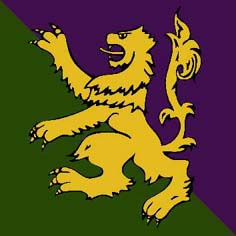Cold War
Following the complete reorganisation of the Territorial Army into the Territorial and Army Volunteer Reserve (TAVR) in 1967 following the 1966 Defence White Paper, the old regional brigades and divisions were disbanded. Among the formations which disappeared was the 51st (Highland) Division/District, which had overseen the Scottish Highlands. [3]
The brigade level of command for the Territorial Army, was eliminated in the 1967 reforms, leaving little or no direction in doctrine or training from above. This was resolved in 1982 with the recreation of several territorial brigades, however these new formations were purely administrative headquarters for training. In 1982, the 51st (Highland) Infantry Brigade was formed with headquarters at Queen's Barracks, Perth taking control overall all the TA units within the Scottish Highlands. [3]
If mobilised, 51st (Highland) Infantry Brigade would oversee Highland Zone, which encompassed the following TAORs: Orkney, Shetland, Western Isles, Highland (region), Grampians, Tayside, Fife, and Central Region. These TAORs were further divided into several Key Points (KPs), which would nominally be guarded by Home Defence battalions, but also the new Home Service Force. [4] 51st (Highland) Brigade encompassing the Scottish Highlands: Argyll (part of Strathclyde), Central Scotland, Kingdom of Fife, Tayside, Grampian, Highland, Western Isles, Orkney, and Shetland. 51st Infantry Brigade's primary role was that of mobile defence of the UK, with a particular emphasis on defending the military infrastructure at the UK end of the Greenland-Iceland-UK (G-I-UK) Gap alongside 52 Brigade. [5]
Twenty-First Century
On 1 April 2002, 51 (Scottish) Brigade took on the regional responsibility for the whole of Scotland, instead of just the Highlands, with its headquarters originally at Forthside Barracks in Stirling and its Regional Training Centre situated at Redford Barracks in Edinburgh. This enabled 52 (Lowland) Brigade, which previously administered all Lowland TA units, to be specifically reorganised to parent Regular light role infantry battalions for operational deployments. 51st (Scottish) Brigade also co-ordinated operational deployments within its regional area of responsibility, such as in scenarios requiring Military Aid to the Civil Community. [6]
In April 2012, with the disbandment of 2nd Division, the brigade came under the control of the new Support Command based in Aldershot. [7] On 31 March 2014, it was renamed 51st Infantry Brigade and Headquarters Scotland, and took on regional responsibilities as part of the Army 2020 reorganisation. [8] It is now located at Redford Barracks, Edinburgh.
